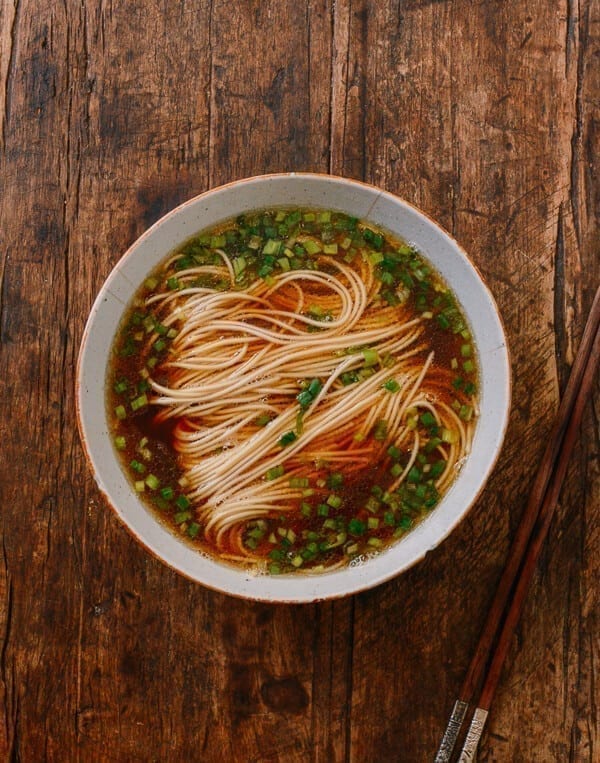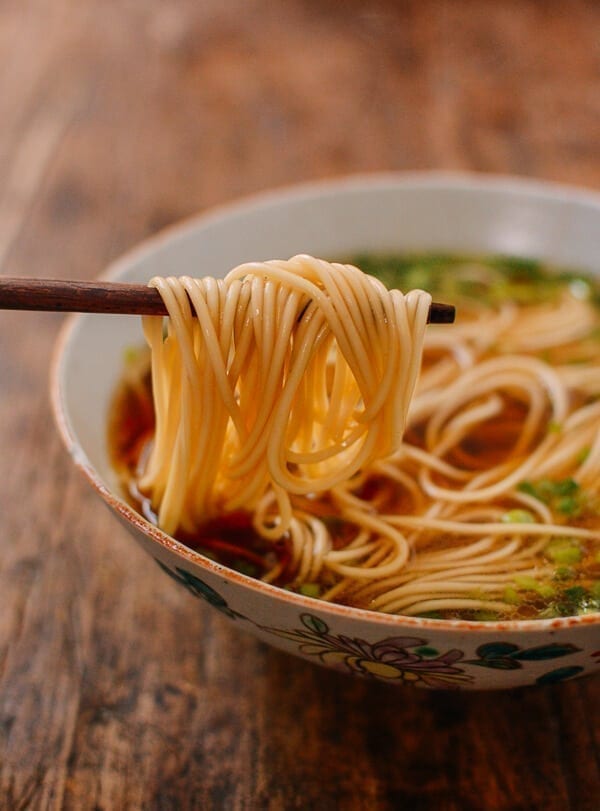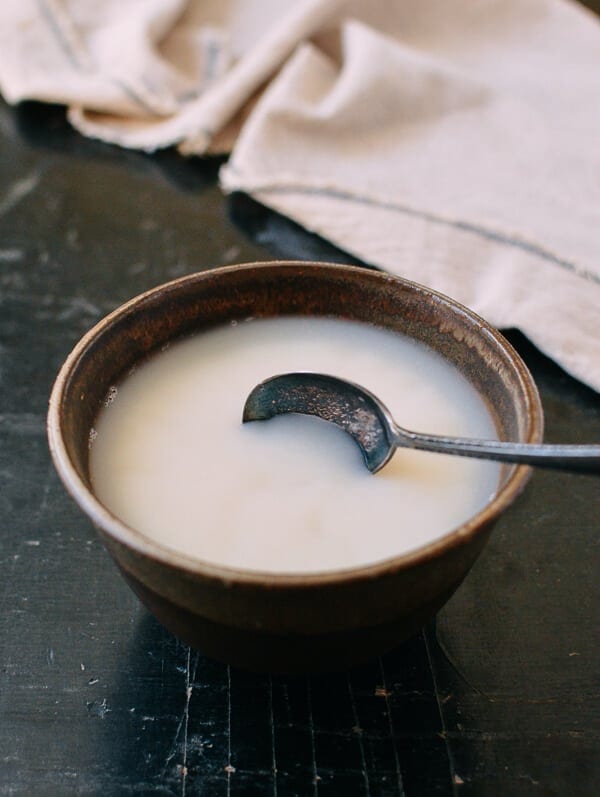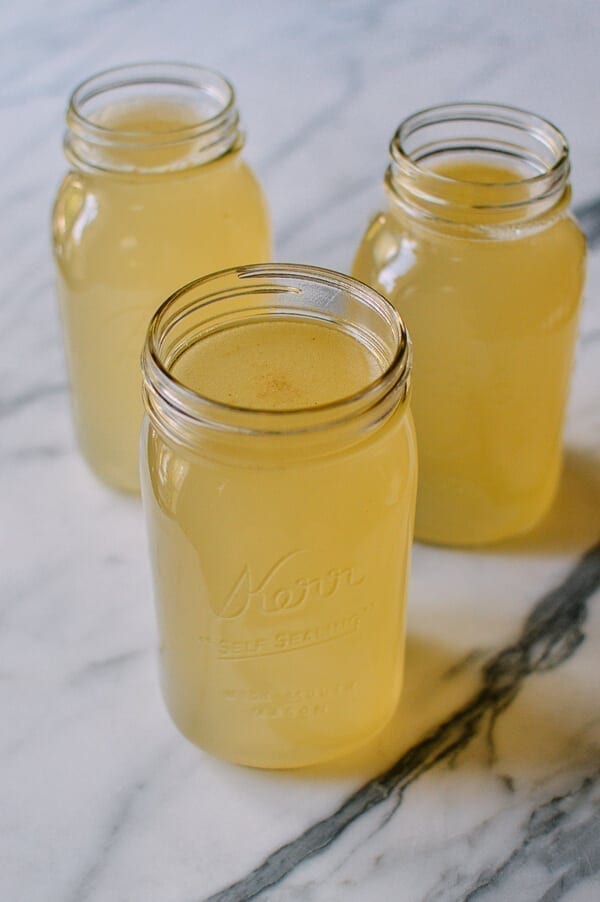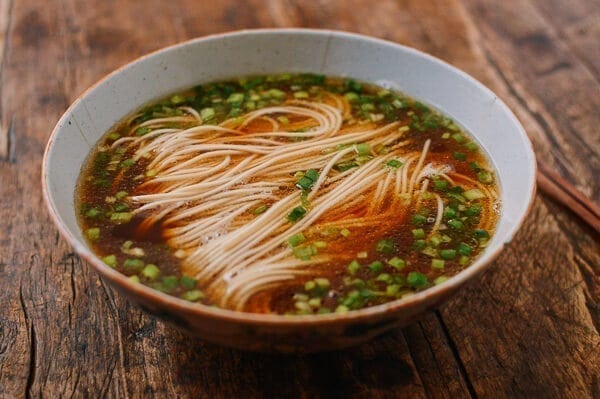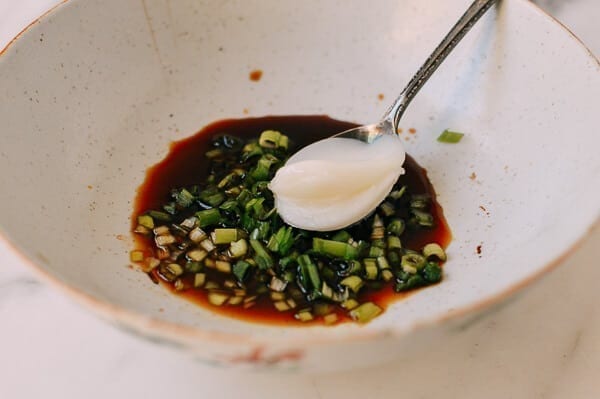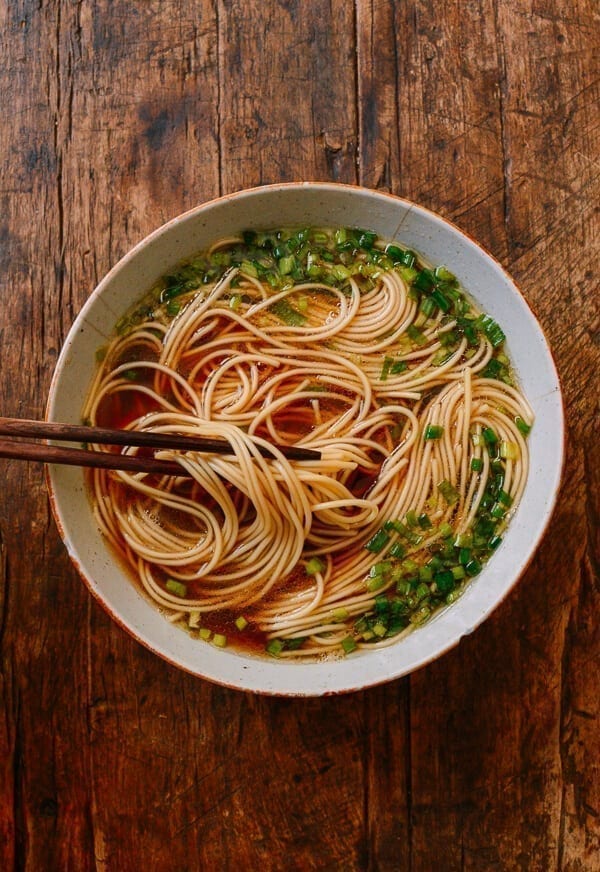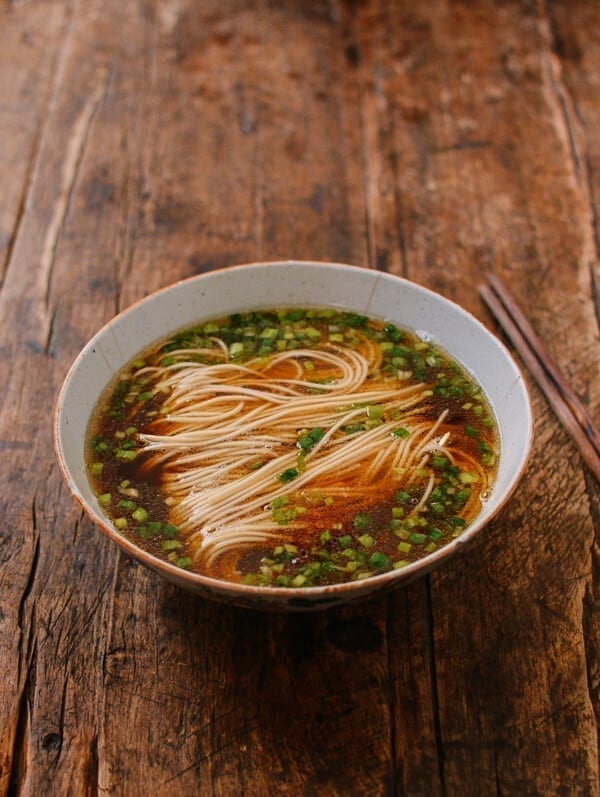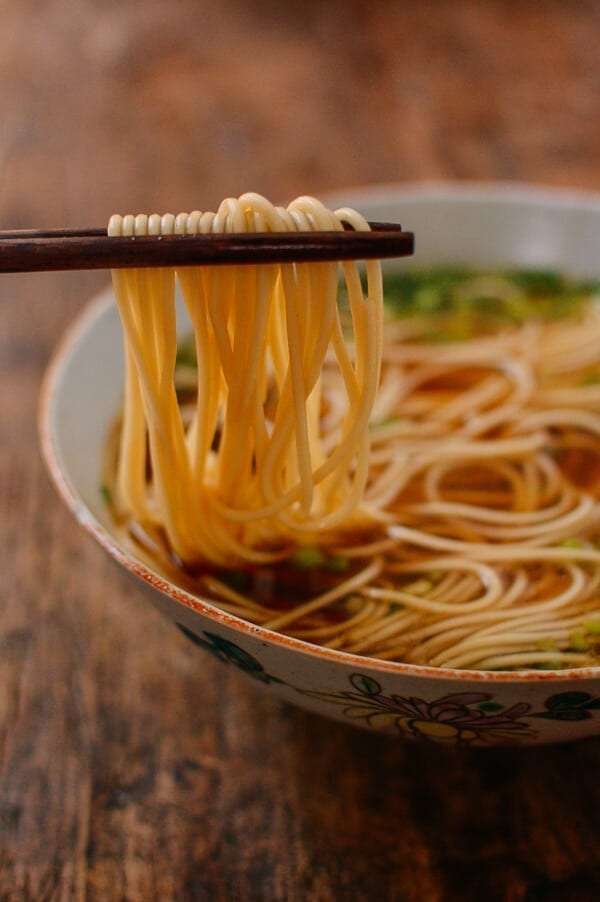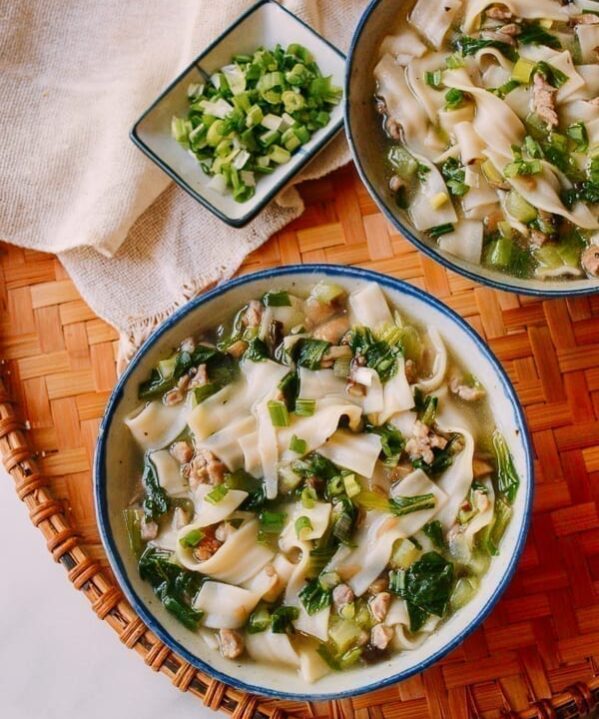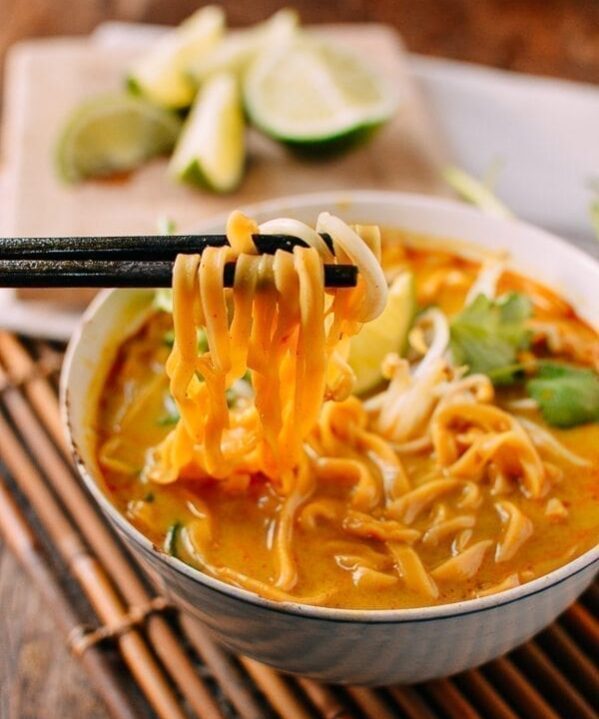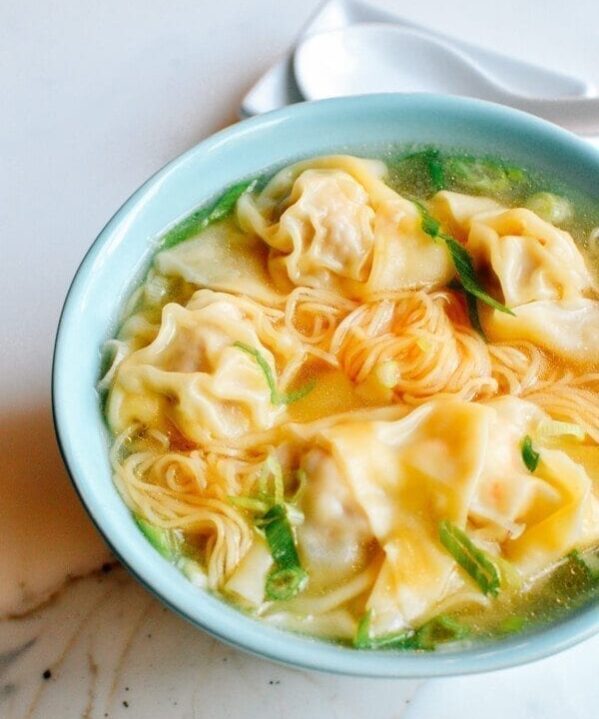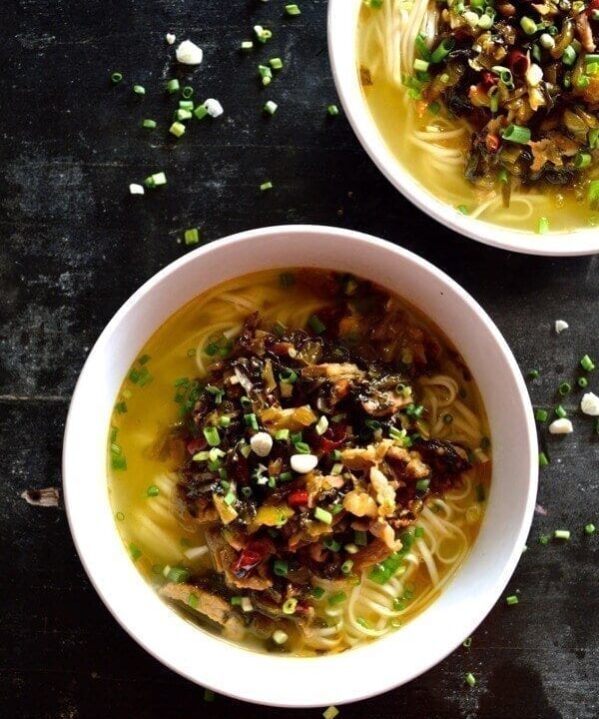STOP SCROLLING! I need to say before you go any further, don’t be fooled by this Yang Chun Noodle Soup’s simple appearance. Read on, or you’ll miss A REAL TREAT!
I’m not exaggerating. Yang Chun Noodle Soup (阳春面, yang chun mian), aka, “Plain Noodle Soup,” is a dish that I’ve wanted to share on our blog forever. So with our recently liberated lard/pork fat recipe, I can finally present it loudly and proudly with zero guilt.
The Secret: Lard.
Lard is the secret to these noodles. Because, as you can see from the photos, there’s no more than a handful of scallions floating on top of a relatively clear broth and a humble bundle of your average noodles. So why the big hullabaloo?
Well if you can put two and two together, you’ll notice that I had to post two recipes before we could get to this simple Yang Chun Noodle Soup recipe: the Lard and the Pork and Chicken Stock.
Together, these are the building blocks for this humble yet extraordinary bowl of noodle soup. Are you feeling the love that I have for these noodles yet?
The Best Version of These Humble Noodles
Though I should say that in most cases, Yang Chun Noodle Soup has been quite literally watered down to the bare minimum of components. Especially in home kitchens, i.e., when my mother cooks it.
Pork lard is replaced with sesame oil, and stock is replaced with water and a sprinkle of MSG. Hence this Yang Chun Noodle Soup often serves as a truly bare bones and frugal solution for a hungry stomach.
In fact, I never really liked it until I had the REAL Yang Chun Mian in a restaurant called Nanjing Impressions (南京大排挡) in China. It’s a chain of nicer sit-down restaurants, and you should definitely look for it if you find yourself in a big city like Beijing and Shanghai.
So how can a simple looking bowl of noodles taste so damn good? First, the Pork Pork Lard. Like butter, lard is very aromatic and is a superb flavor agent. In Asian cooking, lard is irreplaceable.
Secondly, the Pork and Chicken Stock. A well-balanced soup stock is the foundation of a worthy bowl of noodle soup. This is what separates the major leagues from the amateurs.
Thirdly, a good quality light soy sauce. It elevates a well-balanced soup base to a new level, and it’s a vital factor in making this Yang Chun Noodle Soup so outstanding.
Lastly, the thickness of the noodles is immensely important. I prefer to use thin noodles for noodle soups––cook them just until al dente, and their delicate texture is perfect with the flavorful broth.
When we blogged this recipe, Yang Chun Noodle Soup had the whole crew jockeying for a bite. I rarely so incessantly insist on you trying a recipe, but for this one, you really ought to!
Yang Chun Noodle Soup: Recipe Instructions
Cook one serving of thin noodles according to the package instructions.
While the noodles are cooking, bring 2 ½ to 3 cups of stock to a boil. Then add pork lard, light soy sauce, dark soy sauce and sugar to your noodle bowl. Stir in the hot stock.
Once the noodles are cooked, drain them, and add them to the bowl. Sprinkle with chopped scallions, and salt to taste. Serve immediately!
Yang Chun Noodle Soup (Yang Chun Mian)

Ingredients
- 1 serving thin noodles (dry or fresh)
- 2½-3 cups chicken broth (ideally, homemade)
- 1 tablespoon pork lard
- 2 tablespoons light soy sauce
- ¼ teaspoon dark soy sauce
- ¼ teaspoon sugar
- 1 tablespoon finely chopped scallions
- Salt to taste
Instructions
- Cook one serving of thin noodles according to the package instructions.
- While the noodles are cooking, bring 2 ½ to 3 cups of stock to a boil. Then add pork lard, light soy sauce, dark soy sauce and sugar to your noodle bowl. Stir in the hot stock.
- Once the noodles are cooked, drain them, and add them to the bowl. Sprinkle with chopped scallions, and salt to taste. Serve immediately!
nutrition facts
